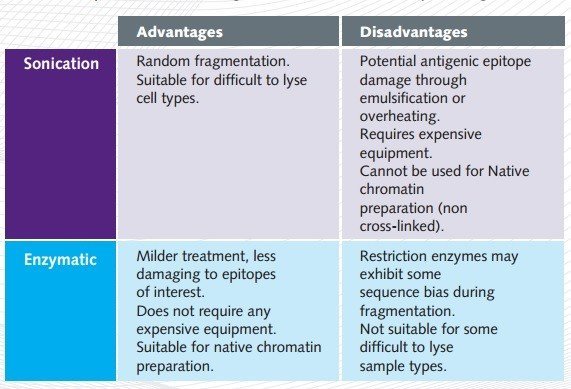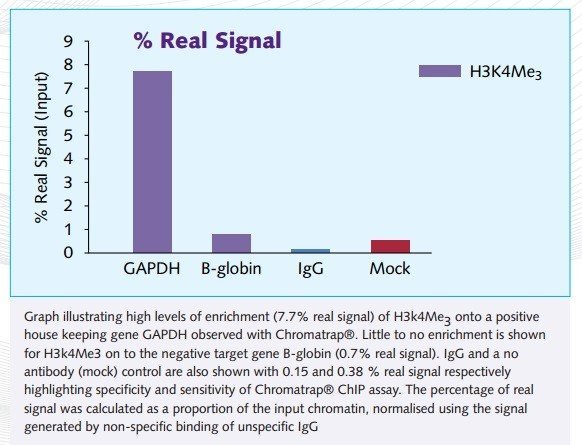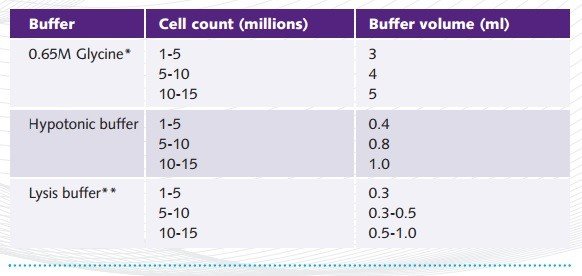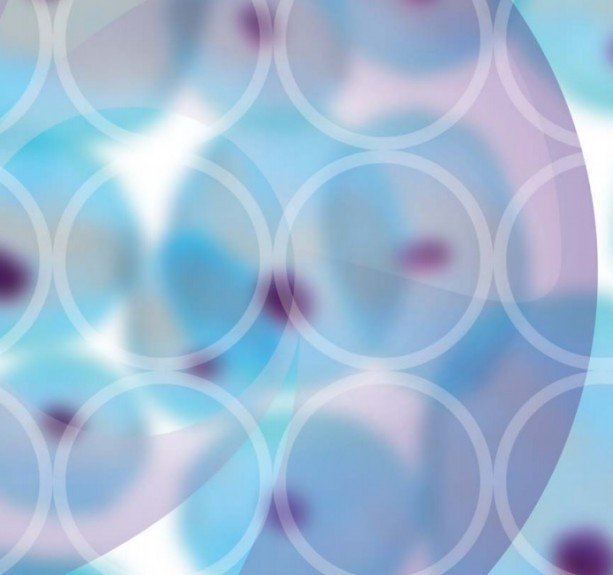Are you trying to obtain a positive chromatin immunoprecipitation result but not succeeding? Fortunately, there are some useful tips available which can help you to get the positive result that you need. It could be as simple as keeping chromatin on ice at all times or making sure fixation solution is made up fresh every time.
Here is Chromatrap®’s top tips for positive chromatin immunoprecipitation results:
Quality of chromatin is the most important aspect of a ChIP assay
The success of a ChIP assay is highly dependent on the quality of chromatin prepared. The 3 most important aspects of chromatin preparation are lysis, fixation and shearing. Each step needs to be optimised individually to best represent the biological scenario being investigated.
Keep chromatin on ice at all times
Chromatin degrades very quickly, especially when stored or handled at room temperature. To prevent rapid degradation and for reproducible results ensure chromatin is kept on ice throughout experiment. Freeze thaw cycles should be avoided, aliquoting chromatin in small volumes once stock is prepared should help prevent degradation. In Chromatrap® very small volumes of chromatin are required per IP therefore a single aliquot provides many ChIP reactions.
Do not over fix cells this will make them resistant to lysis and shearing
As mentioned, the quality of chromatin going in to a ChIP assay is key for a great result. To ensure chromatin quality is good, fixation of cells must be optimised. It is important not to over fix as cells can become resistant to lysis and shearing. Over fixation will also affect the reverse cross-linking efficiency (cross links cannot efficiently be removed) which will affect downstream processes (eg. qPCR). Chromatrap® recommends cell fixation with 1% formaldehyde in either media or PBS for 10 minutes at room temperature on a rotating platform, if still obtaining a poor yield try reducing fixation time to 5 minutes.
Make sure fixation solution is made up fresh every time
Fixing of cells will affect quality of chromatin which will in turn affect the result of the ChIP assay. Ensuring the formaldehyde is fresh for every chromatin preparation gives more reproducible results. Ensure formaldehyde is methanol free as methanol can disrupt cell membranes altering the fixation conditions.
Choose an appropriate shearing method for your cells; sonication/enzymatic
Chromatin can be sheared either by a sonication (mechanical using ultra sonic sound waves) or by an enzymatic (micrococcal nuclease digestion) approach. It is important to choose the appropriate method of shearing for cells. Chromatrap® offers both a standard ChIP kit for use with sonication and an enzymatic ChIP kit. We also provide an enzymatic shearing kit for use in optimisation of chromatin.
Enzymatic shearing is useful if a sonicator is not available and is less disruptive to the epitopes of the protein of interest recognized by the specific antibody. However, this method can create bias as nuclease exhibits sequence specific cleavage. Enzymatic shearing is essential when carrying out native ChIP (chromatin which has not been cross linked) as sonication can disrupt the protein/DNA complexes. Certain cell types may be resistant to lysis resulting in poor enzymatic shearing efficiency in this instance try sonication which aids in both shearing and lysis of the cells.

Make sure chromatin is sheared to between 100- 500bp, chromatin which is over or under sheared will reduce ChIP efficiency
For every chromatin preparation it is essential to check the chromatin is sheared to fragments between 100-500 bp. Chromatin analysis can be carried out quantitatively with a spectrophotometer, fluorometer or microfluidics platform. Samples can be qualitatively assessed using an agarose gel or microfluidics platform. Chromatrap® would recommend DNA quantification on a microfluidics platform as the most accurate measure of DNA and is highly compatible with Chromatrap® buffer systems.
For more information on making sure your chromatin is sheared correctly, please read our blog on this topic.
Ensure you use a ChIP validated antibody, antibodies from other applications do not always work well in ChIP
The use of high quality and specific ChIP validated antibodies is essential for the success of a ChIP assay. The antibody must recognise and bind to native protein that is bound to DNA. It is essential to include ChIP validated positive and negative antibody controls to ensure chromatin preparation and ChIP methodology are appropriate. Antibodies from other applications do not always work well in ChIP.
Always run a positive and negative antibody control
To indicate the efficiency of the immunoprecipitation step and to ensure chromatin preparation is sufficient, positive and negative antibody controls should be run alongside any test antibodies. In the Chromatrap® premium ChIP kit a polyclonal antibody for the highly abundant histone mark H3 as a positive control and a negative control, IgG, are supplied. Primers optimised for qPCR are included, these recognise Glyceraldehyde 3- phosphate dehydrogenase (GAPDH), an ever-present housekeeping gene (Barber et al., 2005), to ensure chromatin preparation and methodology are appropriate. Alternatively, a ‘mock’ ChIP reaction, containing no primary antibody, can be used as a control to determine background levels. In addition to antibody controls a positive and negative gene target are good controls to ensure antibody enrichment is selective.

Determining quantity of antibody to be used in the ChIP assay, usually an excess of antibody to chromatin is required
In a ChIP assay the antibody to chromatin ratio is important, an incorrect ratio of antibody to target protein can compromise the signal to noise ratio. Too much antibody can saturate the ChIP assay leading to unspecific binding. Too little antibody will not be able to bind to all of the chromatin that is present and therefore won’t provide a good representation of antibody enrichment in your sample. Magnetic and agarose beads are known to vary in their antibody binding efficiency. Due to Chromatrap’s® unique solid phase platform we provide a much greater surface area for antibody binding capacity which minimises non specific background.
In Chromatrap® technology very small concentrations of chromatin are used per IP (50ng-7µg). When lower chromatin loadings are used a 2:1 antibody : chromatin ratio is optimal, at higher chromatin loadings (5µg and above) a 1 : 1 antibody : chromatin ratio is optimal- allowing you to save on antibody. It is important to run an antibody dilution series before processing all samples in your ChIP assay to determine the optimum ratio.
Optimise lysis buffer for cells, too much lysis buffer can interfere with antibody binding
Lysis buffer usually contains a mild detergent and when stored at cold temperatures can precipitate out of solution. To ensure the lysis buffer is optimal for lysing of cells for the ChIP assay always pre-warm solution to 40°C with occasional mixing or inverting before use to remove any precipitates. Ensure the buffer is returned to room temperature for the lysis step and all precipitates are re-dissolved. Volume of lysis buffer is important when performing chromatin preparation. Lower cell numbers (1-5 million) require less lysis buffer than greater cell numbers (10-15 million). Too much lysis buffer will result in excess detergent which could have an inhibitory effect on antibody binding and some downstream analysis e.g. qPCR. Excess lysis buffer will also result in a less concentrated chromatin preparation. Ensure lysis buffer volumes are optimised for each chromatin preparation before proceeding with ChIP assay. Chromatrap® has optimised volumes of lysis buffer to be used depending on starting cell number, see table below:

Make sure you are equipped with all the ChIP assay essentials for your research - order now, or consult our detailed guide to find the best kit for you.

